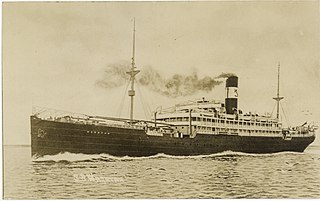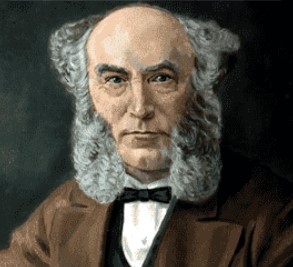
TS Queen Mary is a retired Clyde steamer launched in 1933 and now being preserved as a museum ship. She was built at the William Denny shipyard at Dumbarton for Williamson-Buchanan Steamers. The 871 gross registered ton steamer was powered by three direct drive steam turbines, and carried 2,086 passengers making her the largest excursion turbine on the River Clyde.

The Madagascar national football team, nicknamed Barea, is the national team of Madagascar and is controlled by the Malagasy Football Federation. It has never qualified for the finals of the World Cup. It will take part in its first Africa Cup of Nations in 2019. Among its biggest wins was a 1–0 home victory over Egypt in the qualification rounds of the 2004 African Cup of Nations. Reflecting the official name of the country at the time, the team was known as the Malagasy Republic national football team between 1958 and 1975.

SS Waratah was a passenger and cargo steamship built in 1908 for the Blue Anchor Line to operate between Europe and Australia. In July 1909, on only her second voyage, the ship, en route from Durban to Cape Town, disappeared with 211 passengers and crew aboard. To this day, no trace of the ship has been found.

Prior to World War II, the Indian Ocean was an important maritime trade route between European nations and their colonial territories in East Africa, the Arabian Peninsula, British India, Indochina, the East Indies (Indonesia), and Australia for a long time. Naval presence was dominated by the Royal Navy Eastern Fleet and the Royal Australian Navy as World War II began, with a major portion of the Royal Netherlands Navy operating in the Dutch East Indies and the Red Sea Flotilla of the Italian Regia Marina operating from Massawa.
German submarine U-177 was a Type IXD2 U-boat of Nazi Germany's Kriegsmarine during World War II. The submarine was laid down on 25 November 1940, at the DeSchiMAG AG Weser yard in Bremen, as yard number 1017. She was launched on 1 October 1941, and commissioned on 14 March 1942, under the command of Kapitänleutnant Wilhelm Schulze. After a period of training with the 4th U-boat Flotilla at Stettin, the boat was transferred to the 10th flotilla on 1 October 1942, and based at Lorient, for front-line service, she was then reassigned to the 12th flotilla at Bordeaux on 1 December.

Empire Bison was a 5,912 GRT cargo ship built in 1919 for the United States Shipping Board (USSB) as West Cawthon. In 1940 she was transferred to the Ministry of War Transport (MoWT) and renamed Empire Bison. She was torpedoed and sunk by U-124 on 1 November 1940.
Beaverburn was a 9,875 GRT cargo liner which was built in 1944 for the Ministry of War Transport (MoWT) as Empire Captain. In 1946 she was sold to Canada and renamed Beaverburn. In 1960, she was sold to the United Kingdom and renamed Bennachie. In 1964, she was sold to Liberia and renamed Silvana. She served until 1971 when she was scrapped.
Inkosi was a 6,618 GRT refrigerated cargo liner which was built by Swan, Hunter & Wigham Richardson Ltd, Newcastle upon Tyne for the Ministry of War Transport (MoWT). She was hired by the Royal Navy in 1940 for use as an ocean boarding vessel, but was sunk in an air raid before she could be used for this purpose. The ship was salvaged, converted to a cargo ship and passed to the Ministry of War Transport (MoWT), who renamed her Empire Chivalry. In 1946 she was sold and renamed Planter. She served until 1958, when she was scrapped.

SM UB-50 was a German Type UB III submarine or U-boat in the German Imperial Navy during World War I. The U-boat was ordered on 20 May 1916. She was commissioned into the Pola Flotilla of the German Imperial Navy on 12 July 1917 as SM UB-50.
Begha is a village south of East London in South Africa at the mouth of the Birha River.

Frontier was a 1,000 GRT cargo ship that was built in 1922 as Cattaro by Memeler Schiffswerke, Lindenau & Co, Memel, Germany. After a sale in 1930 she was renamed Finkenau. In 1945, she was renamed Levensau and was seized later that year by the Allies at Brunsbüttel, passed to the Ministry of War Transport (MoWT) and was renamed Empire Convoy. She was allocated to the Netherlands in 1946 and renamed Grebburg. She was sold into merchant service in 1947 and renamed Echo. A sale to South Africa in 1952 saw her renamed Frontier. The ship served until 1957 when she ran aground and broke up.

SS Iron Crown was a 3,353 GRT Australian iron ore carrier which was sunk during World War II by a Japanese submarine.

The SS Georgic was a steam ship built by Harland and Wolff for the White Star Line to replace the SS Naronic which was lost at sea. Georgic was a cargo ship designed principally to carry livestock, at the time of entering service in 1895 she was the largest cargo ship in the world with a deadweight tonnage of 12,000 tons.

RMS Otranto was an ocean liner that was built for the Orient Steam Navigation Company in 1925. The "RMS" prefix stands for Royal Mail Ship, as she carried overseas mail under a contract between Orient Line and Royal Mail. Otranto was in service until 1957, when she was sold for scrap.
SS Benlomond was a British merchant ship torpedoed in the South Atlantic by a German U-boat in 1942. Built in 1922 as Cynthiana, over the next two decades she passed through a number of owners and had several different names; Hoosac (1922), London Corporation (1922-1937), Marionga J. Goulandris (1937-1938) and finally Benlomond from 1938 to 1942.

Langton Grange was a refrigerated steam cargo ship built in 1896 by the Workman, Clark & Co. of Belfast for Houlder Brothers & Co. of London to transport meat and other produce from Australia and South America to United Kingdom.
The Waldensian was a steamship of the Rennie line that was lost in 1862 after it ran aground on rocks at Struis Point near Cape Agulhas en route from Durban to Cape Town. The passengers included eight predikants of the Dutch Reformed Church, one of them, the reverend Frans L. Cachet, later writing that it was said on leaving Durban that the ship would not arrive safely, as "one minister aboard a ship is bad enough, but with eight on board, things could not possibly go well." There was no loss of life.












